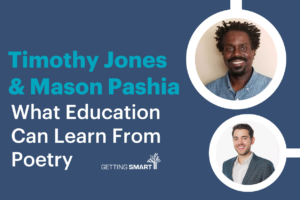Elementary Students Speak About Their Unique Learning Environment
Key Points
-
Watch the embedded 3-minute video that showcases students sharing about how their environment helps them learn.
-
Student empowerment is a function of the level of freedom students have to navigate time and space.

By: Nathan Strenge
In today’s education landscape, “student voice” and “youth empowerment” are popular catchphrases. It’s understandable – there’s a growing recognition that giving young people more say and more ownership in their educational journey has profound, transformative benefits for learning. The ability for students to have a legitimate voice in things such as how they learn, what they learn, when they learn, and where they learn has tremendous potential for schools to adapt to the unique needs and gifts of every individual. However, there’s a glaring disconnect between the popularization of these terms and their actual implementation in many schools.
Over my career, I’ve worn many hats in education: classroom teacher, school founder, leadership coach, design consultant, and more. These experiences have given me the opportunity to really dig into HOW we can amplify youth voices and HOW we can empower young people; what I see is that many of the well-intentioned efforts schools are making to do this fall well short of what our students deserve. For instance, giving kids an hour of unstructured time once a week in a Genius Hour is progress, but it doesn’t address what happens in the other 39 hours. So, what does genuine empowerment actually look like? To put it simply, empowerment is a function of the level of freedom students have to navigate time and space in their everyday school experiences.
Through that lens, Eden Park Elementary School stands out as an exemplary model of genuine student empowerment. Here, 3rd-5th graders in the Learning Community have a tremendous amount of control to determine how they flow through the day.
That sense of freedom really comes out in this 3-minute short film.
During filming, students repeatedly told us the spaces they have access to are a big part of why they feel empowered. The proximity and transparency of the small group rooms to the classrooms make for a great breakout. The commons feel welcoming and comfortable, an agile place that allows students to spread out and find a quiet area when needed, or actively work on a project as a team. The variety of furniture students can arrange and rearrange encourages more movement, more active learning, and a greater sense of autonomy.
One of Eden Park’s students, Josephina, succinctly sums up the importance of such empowerment: “Freedom helps you learn; because without freedom, kids wouldn’t really want to go to school.” It’s through this profound understanding of the role of freedom in learning that Eden Park Elementary is raising the bar in fostering student empowerment.
This model serves as a powerful reminder of the significant impact a true commitment to youth voice can have on the education system, and how reimagining physical space an unlock genuine student empowerment.
If you’d like help creating learning environments that give students the freedom they need to thrive, reach out to me at [email protected] or visit us at https://fieldingintl.com/.
Nathan Strenge is a Senior Learning Designer at Fielding International, where he works with school communities around the world to create environments that foster creativity, collaboration, wellness, and belonging.





0 Comments
Leave a Comment
Your email address will not be published. All fields are required.